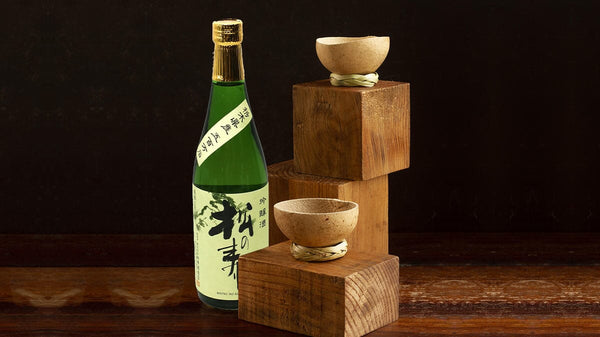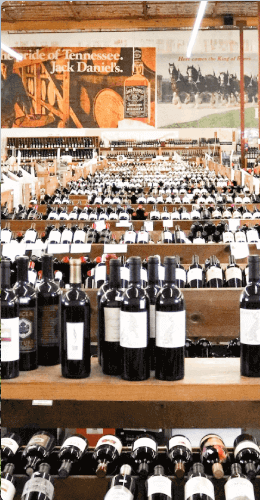How Are Sake and Wine Similar?

Many people who have heard of sake often refer to it as a type of “rice wine,” sometimes leading to a misconception that sake is a Japanese wine. Technically sake is not a wine. While there are some overlapping points, many difference exists between sake and wine. The similarities have more to do with how both beverages should be appreciated and paired with food.
Wine is fermented, while sake is made in a manner similar to beer, using rice, making them distinct products. Furthermore, compared to wine, Japanese sake typically has a higher alcohol content, ranging from fifteen to sixteen percent in most cases. (With climate change, however, highly alcoholic wines of 15-16.5% ABV are now not uncommon).
How Do Sake and Wine Production Differ?
To better understand their differences and similarities, we need to look at the production processes of both beverages. Wine is made using grapes, often with wild or native yeast naturally present on the grape skins. In some cases, the must is inoculated, especially in more commercial wines. The grape’s natural sugars are fermented by the yeast, so wine does not need additional help like koji-kin, which is used in sake. Thus, wine production involves harvesting the grapes, pressing them to obtain must, fermenting, and then refining the wine through maturation, clarification, stabilization, and filtration until it is ready for bottling.
By contrast, sake production is based on rice. The necessary part of the rice is its starch, which is obtained by polishing the rice. Polishing converts the starch into fermentable sugar, and then into alcohol using yeast. In this process, the koji mold plays a crucial role by transforming the starch into glucose, a fundamental step in converting the rice into sake. The polished rice is cooked, and part of it is taken to a special room called koji muro, where it is inoculated with the koji mold.
Sake Making
Sake undergoes a special fermentation affected by the speed at which it is produced, the type of rice, its polishing—which influences the fats and proteins present in the rice grain—and the koji mold, which triggers the conversion of starch into fermentable and non-fermentable sugars. One sake cocktails experts says that "the rarest sakes are those that have been left to age in the bottle, giving them a richer, smoother flavor, endowed with darkness and depth. Personally, I find these very atypical and interesting."
Types of Sake
There are four types of sake you can buy online from the best liqour store California:
Honjozo: Fortified with distilled alcohol, at least 30% of the rice grain is removed during polishing.
Junmai: Not fortified. It is just rice, water, and koji. Like Honjozo, at least 30% of the rice grain is removed during polishing.
Ginjo: At least 40% of the rice grain is removed during polishing. It ferments at lower temperatures for longer periods, usually resulting in delicate floral aromas. It can be fortified with alcohol or not.
Daiginjo: More than 65% of the rice grain is removed during polishing, and the fermentation process is more intensive and laborious. It contains higher proportions of yeast that can develop complex flavors, usually after saturation. These sakes are produced with or without fortification.
We now understand the ingredients that make up sake: koji rice, cooked rice, water, and yeast. Lactic acid is usually added, and in some cases, a bit of added alcohol. Sake is a unique beverage made through this original process. In sake production, the starch is converted into glucose and then into alcohol by the yeast simultaneously. This process involves three additions of ingredients to ensure perfect fermentation. After twenty to thirty days of fermentation, the mixture is filtered, resulting in different types of sake.
So, Sake is Not Technically a Wine
Therefore, sake is not a rice wine, as many believe. Wine, as we’ve seen, is produced through the fermentation of grape must with naturally present sugars, while sake’s alcohol comes from rice starch, a cereal.
What are the Similarities Between Sake and Wine?
One of the main similarities between sake and wine is their use in pairing with all kinds of foods and dishes. One common misconception is considering sake a type of liqueur only to be consumed after a meal. In reality, it is a unique beverage particularly interesting for pairing with various foods (just like wine), making it an ideal alternative for different menus. There are sakes suitable for pairing with fish, vegetables, and even meat.
Similarly, sake can be enjoyed both hot and cold, and even paired with desserts and other sweet foods. The variety of sakes available is so broad that, with a bit of time to choose, one can find an ideal alternative to wine for any type of meal. When you order sake online, you can browse the differerent types.
Experts note that there are currently over ten thousand different sake brands in the world, allowing for multiple options and types of sake for every occasion—some more basic for daily consumption, comparable to table wine, and others much more refined: the signature sakes. While in the past sakes were classified as sweet or dry, today experts often refer to the degree of rice polishing and whether the sake includes added alcohol or just the alcohol from rice fermentation for classification.
Additionally, like wine in some parts of the world, sake can be enjoyed hot in certain cases, always considering the type of sake being consumed, as some are better enjoyed cold, and of course, catering to personal preferences. Nowadays, sake can be found in the finest restaurants worldwide as an ideal alternative to wine for pairing with various dishes, from oriental cuisine to any other type of food.


















Leave a comment